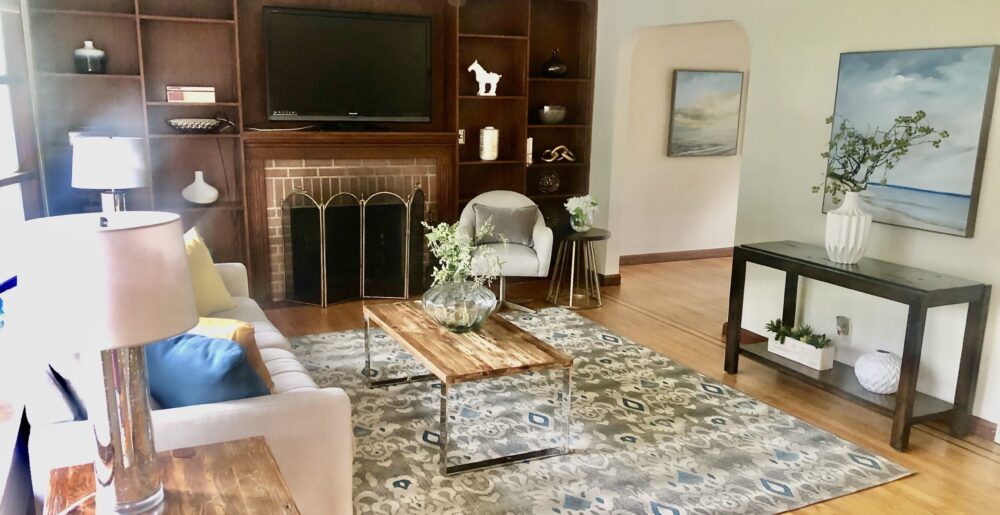Barking dogs are definitely NOT a seller’s best friend – neither are hissing cats, noisy birds, or – yikes – snakes and lizards. At best, they are a distraction to buyers; at worst a deterrent to buyers even making it through a house tour. As the mother of high school and college sons, I’m used to all kinds of both furry and scaly creatures sharing our house, but as a home buyer and stager, I know the smells, fur balls, housebreaking accidents, and other downsides of owning pets can scare off prospective buyers in a matter of seconds. A friend of mine found dog droppings walking through a house with her agent, ugh. (BTW, Nature’s Miracle is a great product for getting rid of “accidents” and their odors on floors and carpeting.)
If at all possible, take your dog out of the house during showings. Take your dog for a walk, or a drive. I did this with my dog when we sold our previous house – and it sold in two weeks for full price. (I also made sure it was vacuumed and cleaned every day; as much work as it was, it paid off.) If there is no one home during the day to remove the dog for showings, put your dog in doggy-day-care as an easier, albeit more expensive, alternative. The expense is likely to pay off in a quicker sale.
When all else fails, put your dog in a penned-in, blocked-off area of the house, like a laundry room, basement, or outdoor dog run if weather permits. Or ask a friend to “board” your dog if you expect lots of showings and can’t be home to manage your pet.
As for cats, most of them hate cars and they’re harder to corral anyway. In fact, they tend to run and hide, which is great for when prospective buyers visit, but their litter boxes are another story. They are dead give-aways that trigger visions of allergies, urine stains, and lingering odors. So hide the litter box completely from view if at all possible. Some suggestions: tuck it in a corner of the basement, underneath a shelf with a privacy screen in front of it, in a corner behind a hot-water heater, even under a high-rise bed temporarily. And keep them scrupulously clean! Even better, there are very attractive resin wicker boxes and pieces of furniture that look like cabinets, end tables, nightstands, etc. designed specifically to disguise litter boxes. Check out http://www.catsplay.com/kitty_condos.php3 as one place to find some great litter box “furniture.”
Reptiles and frogs are another story – I recommend “loaning” them out to a friend or relative (good luck!) or even locating a reptile “rescue” center. Nothing scares off buyers like a snake under glass – I was once unlucky enough to encounter a dozen snake cages in the basement of a house I was touring. Gave me nightmares about “lost” and “forgotten” snakes being left behind when the owners moved out.
Noisy birds – especially large ones like parrots – look beautiful, but they leave a lot of droppings and can make you jump when they squawk, talk, or even a chirp. The size of the cages also interferes with the aesthetics and spacious feeling of any house. The very first house I staged belonged to people who served as a foster-home to rescued parrots, with two huge cages in the kitchen. Not exactly appetizing or peaceful. Every time a female guest walked by, one of the parrots made cat-calls just like a construction worker. Funny at parties, BUT.
One last problem: I haven’t run into a nasty dog yet, but sellers should be made aware that there could be liability issues from aggressive animals that bite prospective buyers or agents.

